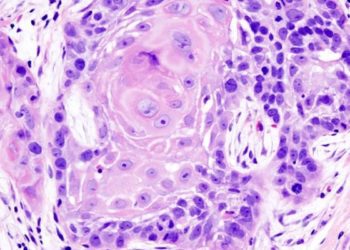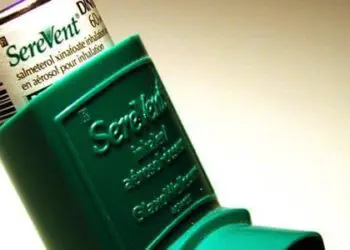Banning smoking in public places linked to reduction in asthma-related hospital admissions
Jan 21st – 6,802 admissions are proposed to have been prevented by the legislation.
 [tabs tab1=”2MM Rundown” tab2= “2MM Full Report” tab3=”About the Authors”]
[tabs tab1=”2MM Rundown” tab2= “2MM Full Report” tab3=”About the Authors”]
[tab]
Image: PD
1. A 12.3% reduction in the number of children under 14 hospitalized for asthma-related reasons was observed in England after the passage of public space smoke-free legislation.
2. 6,802 admissions are proposed to have been prevented by the legislation.
The current study agrees with previous research indicating that smoke-free legislation is linked to reductions in pediatric asthma-related hospitalizations. While causation cannot be implied through associations, and other variables may have played a role in the results, the large sample size and robust study design indicate that a legislative reduction of public smoking may be an effective way to improve health in children with asthma such that they require less frequent hospitalizations.
Click to read the study in Pediatrics
[/tab]
[tab]
Image: PD
1. A 12.3% reduction in the number of children under 14 hospitalized for asthma-related reasons was observed in England after the passage of public space smoke-free legislation.
2. 6,802 admissions are proposed to have been prevented by the legislation.
Primer: As second-hand tobacco smoke contains numerous respiratory irritants, individuals both with and without underlying pulmonary illness experience significant deleterious effects when exposed to second-hand smoke, including cardiovascular and pulmonary disease. The known negative health implications of second-hand smoke have led many countries to pass legislation banning smoking in public places. For instance, in 2007, England banned smoking in all enclosed public spaces and places of work. Previous studies have shown a connection between banning public smoking and reductions in emergency department visits and hospitalizations for asthma-related problems. The current study expands upon previous research by investigating the effect of the 2007 public smoking ban on asthma-associated hospitalizations for children in England.
Background reading:
1. Smoke-free legislation and hospitalizations for childhood asthma [New England Journal of Medicine]
2. Reduction in asthma-related emergency department visits after implementation of a smoke-free law [Journal of Allergy and Clinical Immunology]
This [interrupted time series] study included 217,381 hospital admissions for asthma in children under the age of 14 in England between April 1, 2002 and November 30, 2010. Researchers used admissions statistics prior to and after the legislation initiation to estimate the number of hospital admissions prevented by the passage of the legislation. In addition, the differences in admissions by age, gender, socioeconomic status, and urban or rural residence were investigated.
Implementation of the legislation was found to coincide with a reduction of asthma-related hospital admissions by 3.4% (p<.05) per year, with an overall 12.3% reduction in admissions or the prevention of 6,802 hospitalizations in the time from implementation to the conclusion of the study. Reductions were recognized across all regions of the nation, and no significant differences were seen between groups with varying demographics.
In sum: The current study agrees with previous research indicating that smoke-free legislation is linked to reductions in pediatric asthma-related hospitalizations. While causation cannot be implied through associations, and other variables may have played a role in the results, the large sample size and robust study design indicate that a legislative reduction of public smoking may be an effective way to improve health in children with asthma such that they require less frequent hospitalizations.
Click to read the study in Pediatrics
By [LHC] and [DB]
More from this author: Paternal distress predicts poor early childhood mental health; Adolescents seeking weight loss treatment at higher risk for weight-based bullying; Enclosed tobacco displays appear to dissuade teens from purchasing tobacco products;New AAP policy statement endorses use of emergency contraception for adolescents
© 2013 2minutemedicine.com. All rights reserved. No works may be reproduced without written consent from 2minutemedicine.com. Disclaimer: We present factual information directly from peer reviewed medical journals. No post should be construed as medical advice and is not intended as such by the authors or by 2minutemedicine.com. PLEASE SEE A HEALTHCARE PROVIDER IN YOUR AREA IF YOU SEEK MEDICAL ADVICE OF ANY SORT. Content is produced in accordance with fair use copyrights solely and strictly for the purpose of teaching, news and criticism. No benefit, monetary or otherwise, is realized by any participants or the owner of this domain.
[/tab]
[tab]
 Leah Carr: Leah Carr is a 2010 graduate of Bates College and a 3rd year M.D. candidate at the University of Vermont College of Medicine.
Leah Carr: Leah Carr is a 2010 graduate of Bates College and a 3rd year M.D. candidate at the University of Vermont College of Medicine.
 Devika Bhushan: Devika is a 4th year M.D. candidate at Harvard Medical School.
Devika Bhushan: Devika is a 4th year M.D. candidate at Harvard Medical School.
[/tab]
[/tabs]




